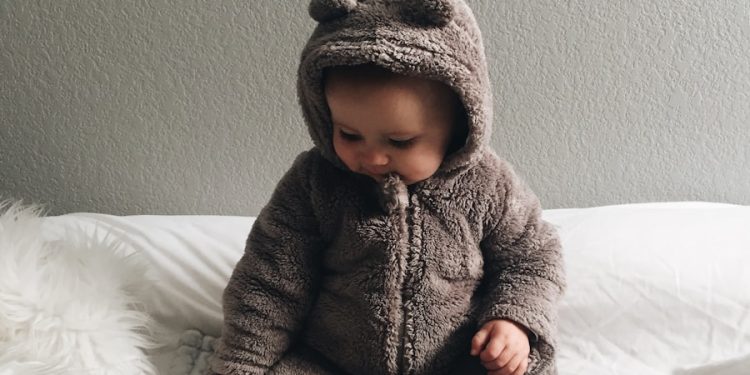Dressing your baby properly for each season is crucial to keeping them comfortable, safe, and healthy. Babies are more sensitive to temperature changes, and the way they are dressed can significantly impact their mood and well-being. As the seasons shift, knowing how to layer and what materials to use can make all the difference in ensuring that your little one stays comfortable throughout the year. This guide will help you navigate the must-haves for dressing your baby during each of the four seasons.
1. Spring: Balancing Warmth and Coolness
Spring weather can be quite unpredictable, with temperatures often fluctuating between warm and chilly. The key to keeping your baby comfortable during spring is layering. Start with a breathable cotton onesie as the base layer. Cotton is soft on your baby’s skin and helps to maintain a comfortable temperature.
For those cooler spring mornings or evenings, add a lightweight sweater or cardigan. Baby leggings are also perfect to keep your little one’s legs warm. It’s also a good idea to have a light jacket or windbreaker handy, especially if you are taking a walk outdoors. Spring is all about adapting to the changes in temperature, so dressing in layers that can easily be added or removed is the way to go.
Accessories like a hat are essential during spring to protect your baby’s head from breezy winds or unexpected sun. Soft cotton hats are ideal for providing warmth without causing overheating. Aim for breathable fabrics to ensure comfort during this transition season.
2. Summer: Keeping Cool in Hot Weather
During the summer months, the primary focus is keeping your baby cool. The best way to do this is to opt for lightweight, breathable fabrics like cotton, linen, or bamboo. Short-sleeve onesies or rompers are perfect for day-to-day wear, allowing for air circulation to prevent your baby from getting too hot.
Since babies are more prone to heat rashes, it’s best to avoid tight-fitting clothing and opt for loose, comfortable outfits. When heading outdoors, a wide-brimmed hat is a must to shield your baby’s face, neck, and ears from the sun. Additionally, lightweight long-sleeve shirts and pants can provide added protection from the sun’s rays without trapping heat.
Remember to keep your baby well hydrated and avoid being outdoors during the hottest part of the day. If you’re taking your baby out in a stroller, a breathable muslin blanket can provide shade without restricting airflow. Summer dressing is all about minimizing layers and keeping things breezy.
3. Fall: Cozy Layers for the Crisp Air
As temperatures begin to drop in the fall, it’s important to start incorporating more layers to keep your baby warm. Long-sleeve onesies make an excellent base layer, providing warmth while being gentle on your baby’s skin. You can pair these with soft, stretchy leggings or pants that allow for movement while offering additional coverage.
For cooler days, a fleece jacket or a warm cardigan will help keep your baby snug. Footed sleepers are also a great choice for both day and night to ensure that your baby’s feet stay warm. The fall season is also the time to bring out the socks and booties to keep those tiny feet cozy.
Having a few hats on hand is also important, as fall weather can be breezy. Opt for a hat that covers the ears for added warmth. Side-snap shirts are also great for layering over onesies, making it easy to adjust to the varying temperatures throughout the day.
4. Winter: Bundling Up for the Cold
Winter is the season when keeping your baby warm becomes a top priority. Layering is key, and you’ll want to start with a soft, long-sleeve onesie made of cotton or wool blends to keep warmth close to the skin. Footed sleepers can be worn over the onesie to provide full-body warmth, and adding a fleece or wool cardigan helps ensure your baby stays cozy.
When heading outdoors, a warm snowsuit or bunting bag is essential. These provide full coverage and protect your baby from the cold, wind, and snow. Remember to avoid bulky jackets when placing your baby in a car seat, as this can interfere with the harness fitting properly—instead, use a car seat cover or a blanket to keep them warm.
Hats, mittens, and socks are non-negotiables in winter. Make sure the hat covers your baby’s ears, and choose mittens that are easy to put on and secure. Wool socks or booties will help keep those little feet warm, but always check that your baby isn’t overheating.
5. Layering Tips for Year-Round Comfort
Layering is a year-round strategy for keeping your baby comfortable. The general rule is to dress your baby in one more layer than you would wear yourself. This ensures that they are warm enough without becoming too hot. Start with a breathable base layer, such as a onesie, and add clothing based on the current weather conditions.
In warmer months, stick to lighter layers that can be easily removed. In colder months, use a combination of cotton and wool layers to maintain warmth. Make sure that all layers are easy to put on and take off, as babies can quickly become too warm, especially when moving between indoor and outdoor environments.
6. Accessories to Keep Your Baby Comfortable
Accessories play an important role in dressing your baby for different seasons. Hats are useful year-round: in the summer, they protect your baby from the sun, while in the winter, they help retain body heat. Socks are also essential in all seasons, providing an extra layer of warmth for your baby’s feet.
Mittens are great for winter to prevent your baby’s hands from getting cold, and they can also stop newborns from scratching themselves. Bibs are a must-have accessory regardless of the season, as they help keep your baby’s clothing clean during feedings.
7. Dressing for Indoor Comfort
While dressing your baby for the outdoors is important, indoor comfort should not be overlooked. In the warmer months, a simple short-sleeve onesie or lightweight romper is ideal for keeping your baby cool indoors. During colder months, footed sleepers or long-sleeve onesies paired with soft leggings will help maintain a comfortable temperature.
Always be mindful of the temperature inside your home. If the heating is on, your baby may not need as many layers as you would expect. Check the back of their neck to gauge if they are too warm or too cold, and adjust their clothing accordingly.












